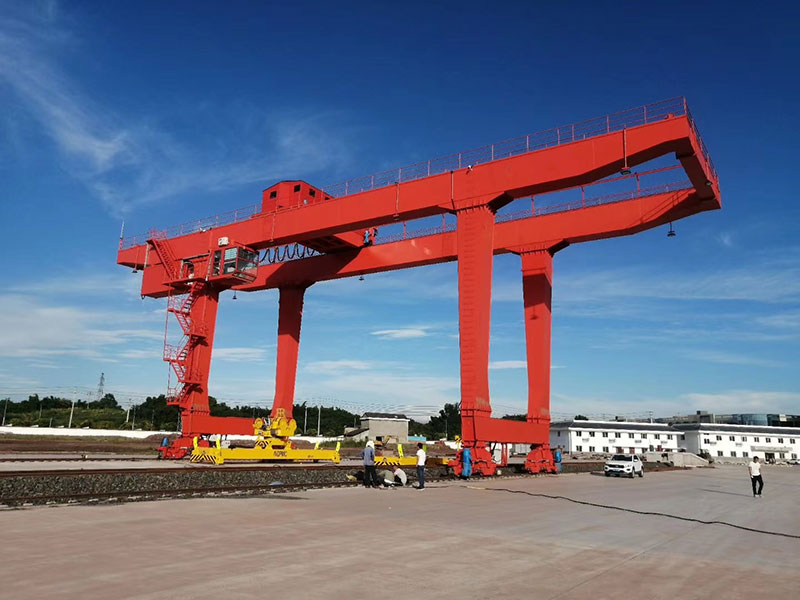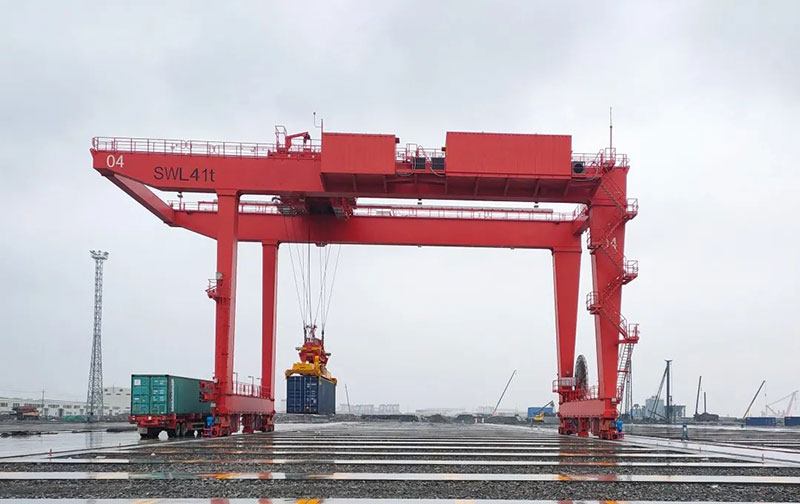Rail-mounted container gantry cranes play a vital role in container handling operations, enabling efficient and organized movement of containers in ports and container terminals. With their ability to traverse along rails, these cranes offer numerous advantages that contribute to the smooth functioning of the logistics industry. In this article, we will explore the importance of rail-mounted container gantry cranes, highlighting five key aspects that make them an essential asset in container handling operations.

Optimal Space Utilization and Flexibility
Rail-mounted container gantry cranes are designed to move along tracks, which allows for optimal space utilization in container terminals. These container gantry cranes can cover large areas and work efficiently in tight spaces, making them ideal for maximizing storage capacity and facilitating smooth container movements.
The rail-mounted design also offers flexibility in adjusting the positioning of the crane based on operational requirements. It enables the crane to move along the tracks, aligning with different container stacks and providing access to specific areas of the terminal. This flexibility enhances operational efficiency, reduces congestion, and ensures effective space management.
High Productivity and Fast Operations
Rail-mounted container gantry cranes are known for their high productivity and fast operations. These cranes are capable of handling multiple containers simultaneously, significantly increasing the loading and unloading rates. With their ability to lift and transport containers swiftly and efficiently, they play a crucial role in reducing turnaround times for ships and trains.
Moreover, rail-mounted gantry cranes can perform precise positioning of containers, allowing for quick and accurate placement within the stack. This accuracy minimizes the risk of errors and damage during container handling operations, ensuring smooth and efficient workflow.

Enhanced Safety and Reduced Manual Labor
The use of rail-mounted container gantry cranes enhances safety in container handling operations. By automating the lifting, transport, and stacking processes, these cranes reduce the reliance on manual labor and minimize the associated risks. Operators can remotely control the crane’s movements, ensuring a safe distance from potential hazards.
Additionally, railway gantry cranes are equipped with advanced safety features such as anti-sway systems, collision avoidance sensors, and overload protection mechanisms. These safety measures help prevent accidents, protect valuable cargo, and safeguard the well-being of workers in the terminal.
Versatility and Adaptability
Rail-mounted container gantry cranes offer versatility and adaptability to cater to diverse operational requirements. They can handle various container sizes and types, including standard containers, high-cube containers, and specialized containers. This versatility allows terminals to accommodate different types of cargo, meeting the demands of global trade.
Moreover, rail-mounted gantry cranes can be customized with additional features such as spreader systems, weighing systems, and remote control capabilities. These adaptations enhance the crane’s functionality and make it compatible with specific operational needs, ensuring seamless integration into existing container handling processes.
Increased Throughput and Cost Efficiency
The use of rail-mounted container gantry cranes results in increased throughput and cost efficiency in container terminals. The ability to handle multiple containers simultaneously, coupled with fast operations and precise positioning, enables terminals to process a larger volume of containers within a given time frame.
By optimizing operational efficiency and reducing manual labor requirements, rail-mounted gantry cranes contribute to cost savings in the long run. These lifting equipment minimize the need for additional equipment and labor, resulting in reduced operational expenses and improved financial performance for container terminals.
Conclusion
Rail-mounted container gantry cranes are a crucial asset in container handling operations, offering optimal space utilization, high productivity, enhanced safety, versatility, and cost efficiency. Their ability to traverse along rails allows for efficient movement and positioning of containers, facilitating smooth operations in container terminals. With their contribution to increased throughput, reduced turnaround times, and improved safety, rail-mounted container gantry cranes play a pivotal role in the logistics industry’s growth and success.